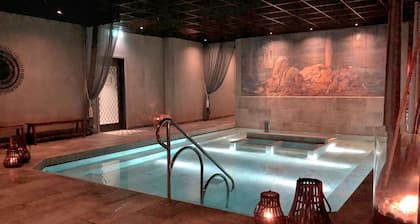When you take a drive north of Gothenburg, the magnificent structure of the Bohus Fortress is visible long before you reach the parking lot. Standing proudly on a 130-foot (40-metre) cliff, and surrounded by the natural moat of the Göta River, it is an impressive sight. The ancient fortress has thick stone walls, imposing turrets and a cold dungeon.
A castle was first constructed on this site in 1308. The land belonged to the Norwegians then and it was King Haaken V Magnuson who saw the potential of this strategic position. The stronghold has survived over a dozen sieges through the years and has never been conquered. However, it was damaged so severely during an attack by the Swedes in the 1560s that a renovation was needed. Much of what you see today is the remains of a rebuilding project, carried out at the turn of the 17th century. Not long after this, the land was ceded to Sweden.
Climb the hill, pass through the castle gate and admire the ancient stonework. Imagine being here in a time of knights and military wars. A museum within the fortress will feed your imagination further with tales of the sieges, the battles and the various kings that have shaped the castle’s past. Don’t miss the dungeon area, where the radical Pietist Thomas Leopold was imprisoned for 42 years. Guides dressed in medieval costumes are on hand to take you around the site for a small charge if you wish to find out more.
Visit in July to attend the Kungahälla Medieval Festival, when battles, feasts and dances are reenacted. This is the second-biggest festival of its kind in Sweden. Toward the end of August the area comes alive again with the Soul Rebel reggae festival.
Bohus Fortress is located 12 miles (20 kilometres) north of Gothenburg on the southern edge of Kungälv, in Bohuslän. The site is open from April to October, with longer opening hours during the months of June, July and August. There is a small fee for entry.









